
What are the secrets behind the underfloor of a Formula 1 car?
First things first, ground effect is a phenomenon exploited by any Formula 1 car, almost from any era… When a body of generic shape works in ground effect, it means that it is moving near a solid surface. Such a situation is exactly the opposite than what – for example – an airplane does. We shouldn’t think of the ground effect only as motorsport-related, as there are many examples of this phenomenon in nature: seagulls often fly close to the shallow, in order to minimize the energy consumption!
Fine, but how does all of this apply to the world of Formula 1? And why is energy consumption minimized by being near a solid surface?
In general, an airfoil (but what we are about to say remains valid for bodies of any shape) is subjected to aerodynamic forces that can be broken down into two main vectors:
- Aerodynamic downforce: acts perpendicular to the direction of car’s motion, pushing it towards the ground; to be clear, airplanes have wings that divert this force upwards... in this case, we should speak about “lift”, which allows them to take off and continue to fly;
- Aerodynamic drag: acts in the same direction of motion, but against it. According to the previous analogy, drag is the expenditure of energy required by the vehicle to move forward at a certain speed. Being more precise, another term should be added to this resistance, namely the rolling resistance of the tyres; however, it can be observed that at high speeds the latter is negligible compared to aerodynamic drag, so we will not focus on it.

As explained in the article about the use of CFD in F1, the goal is always to maximize downforce and minimize drag: by doing so, you optimize the aerodynamic efficiency (defined by the downforce/drag ratio).
Our curiosity may let ourselves wonder why downforce and drag are generated: their nature is related to the fact that the passing of the single-seater diverts the airflow streamlines, absorbing their energy content. This also explains why a driver chasing the one ahead of him often finds it hard to overtake: the reason - leaving aside turbulence - is that the air used by the driver following has a lower energy content as it has been already "worked" by the car driver ahead!
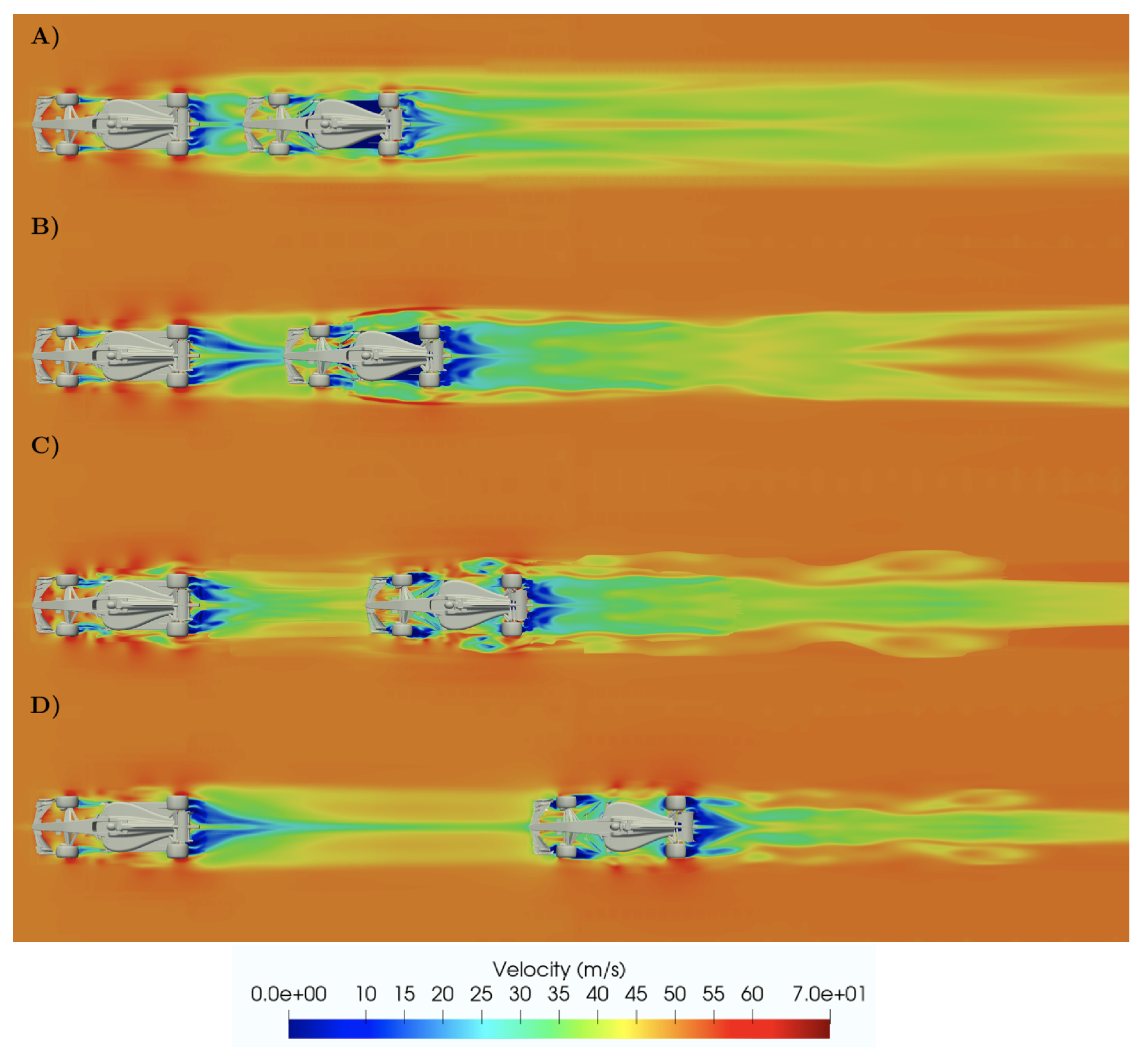
A.Guerrero, R.Castilla - Aerodynamic study of wake effects on a Formula 1 car
This is where ground effect comes into play: the presence of the road surface very close to the front wing and the underbody means that the above-mentioned streamlines are straighter than in clean air. This greatly reduces drag, but doesn't translate into a loss of downforce!
Consider that the increase in downforce is such that a wing in free air with an angle of attack of 12° generates as much downforce as a wing close to the ground with an angle of attack of 6°.
Ground effect and 2022 Technical Regulations
Having understood the enormous advantages of the ground effect, FIA legislators have set the definition of the current regulations in such a way as to exploit the phenomenon described to a greater extent than in the past.
In an attempt to make overtaking less complicated, it was decided to give the underfloor a key role in generating downforce.

The side view of a single seater shows how each section of the bottom varies, also highlighting some key areas:
- The inlet section, also known as “Leading Edge”, is designed in such a way as to take in as much airflow as it can – while avoiding that the latter is unstable;
- The "Diffuser Throat” is the point of minimum height of the entire underfloor: here the speed of the flow will be the highest, and the pressure the lowest. The sensitivity of this area is such that FIA increased its height with respect to the ground by 10 mm, to prevent porpoising;
- The outlet section of the diffuser, also called "Trailing Edge", has in a strong expansion of the airflow its main task, which we will discuss later; also in the design definition of this section, it is necessary to bear in mind the objective of not making the flow unstable;
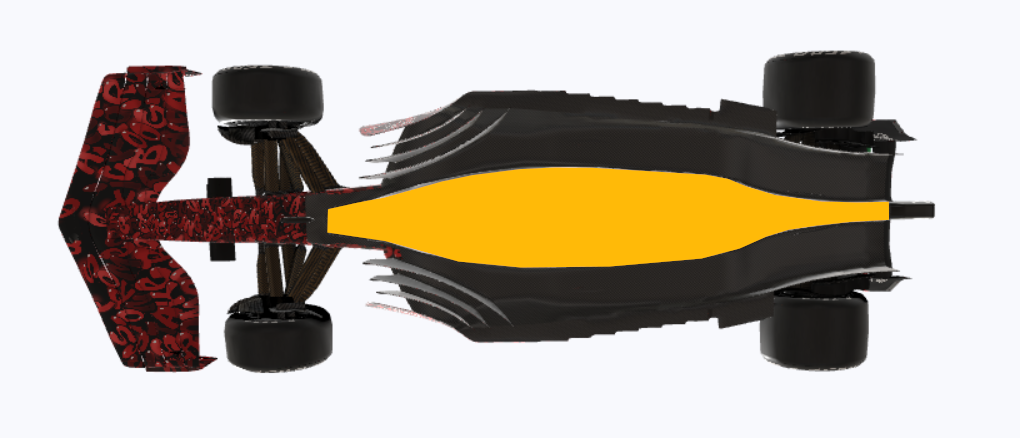
In the bottom view you can see the central portion of the underfloor (highlighted in yellow), an area that works extremely close to the tarmac, so much that it touches it sporadically - with spectacular sparks produced!
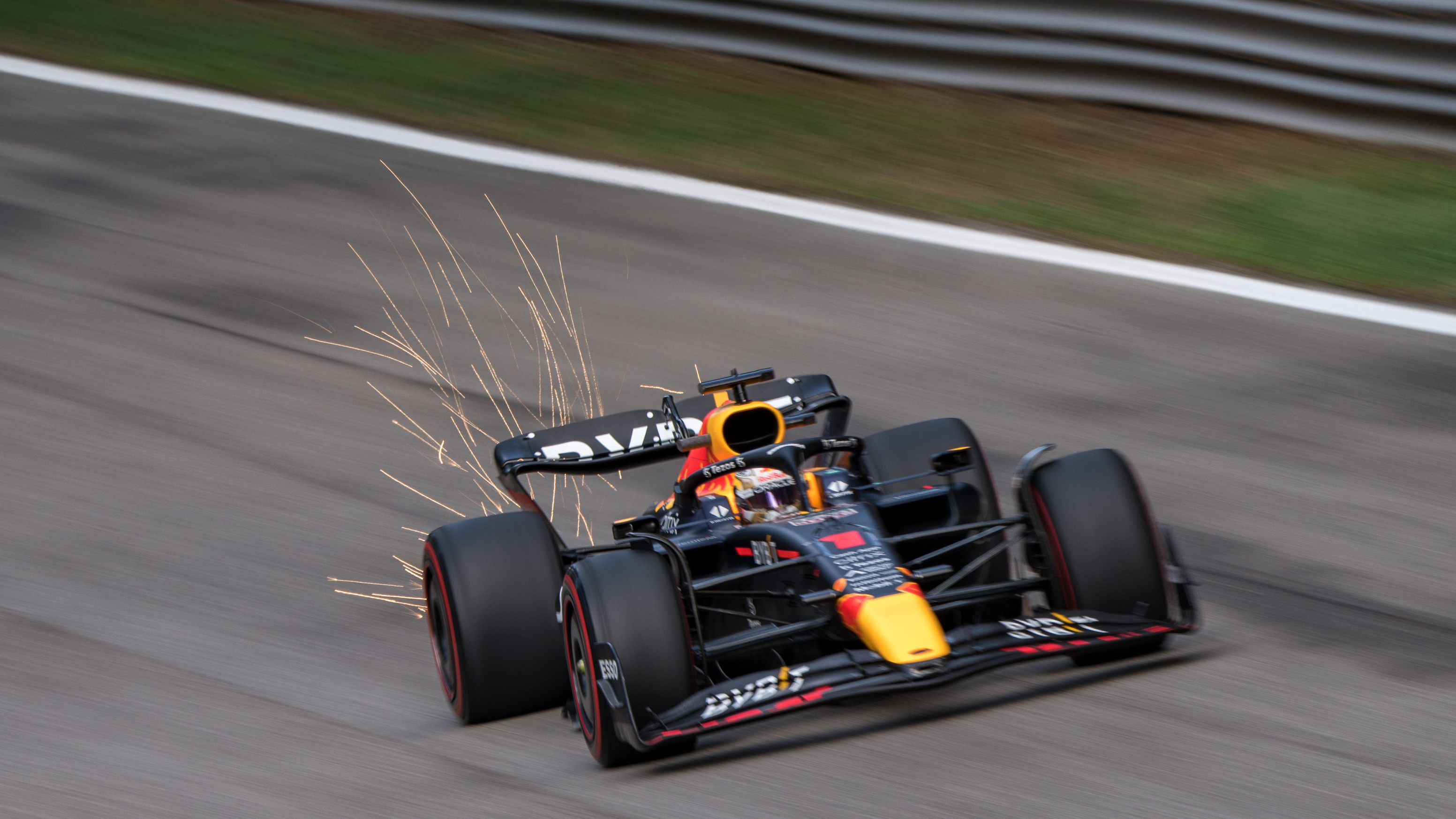
F1Gresty
On the sides of this area there are those which improperly take the name of "Venturi Tunnels": in fact, although the initial narrowing of the section speeds up the flow exactly like in a Venturi Tube, the effect of the diffuser must also be taken into account!
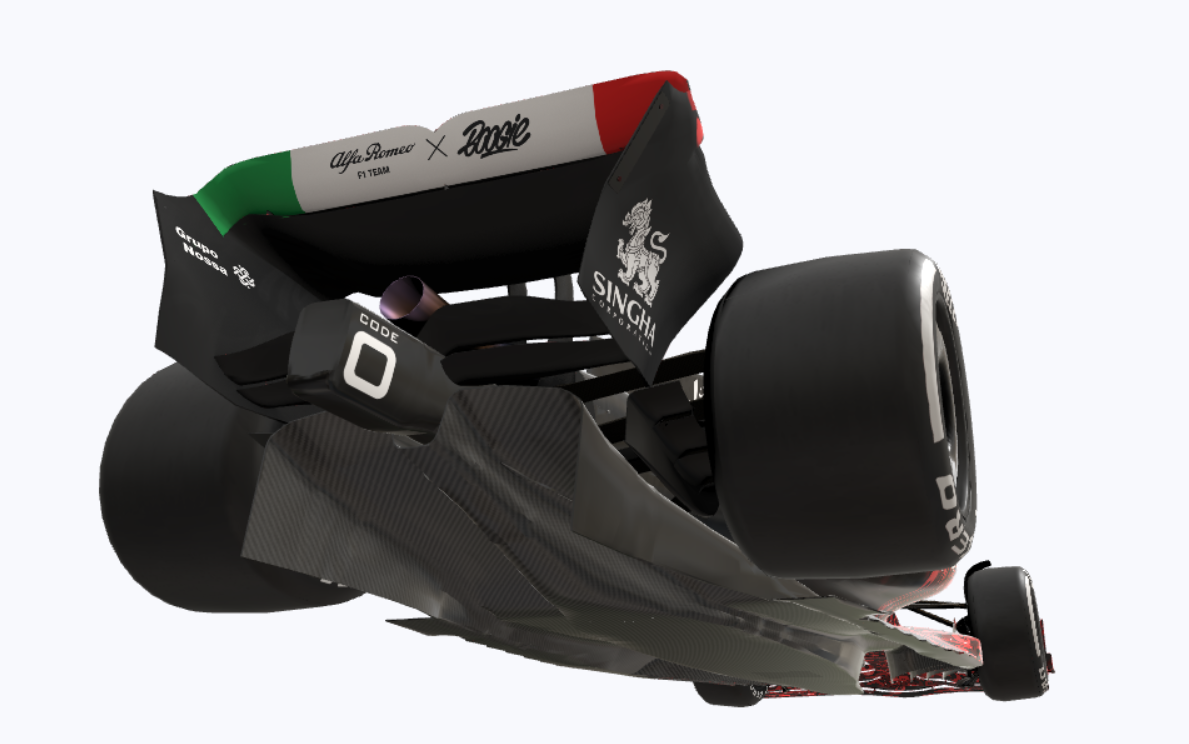
In the final portion of the underfloor, in fact, the diffuser has the task of expanding the airflow as much as possible, to bring it back to pressure values equal to atmospheric pressure when it is extracted: not surprisingly, sometimes the diffuser is also referred to as an “extractor” (at least here in Italy!). A well-functioning diffuser guarantees a robust and consistent performance of the entire underfloor, which gives us an idea of how much the underfloor and the diffuser together should be considered as a single body during the design phase.
So does the underfloor really create a seal with respect to the asphalt?
The answer is… it has to! In fact, if we manage to prevent spillage of secondary airflows – typically from the side edges of the floor itself – the characteristic of high speed and low pressure of the underfloor streamlines are accentuated. And this, in turn, allows us to generate some useful downforce…
The teams have two ways to make sure the floor can be sealed from the outside environment:
- Mechanical seal: the underfloor of an F1 single-seater is made of carbon fibre, but – as with all composite materials – the lay-up of the carbon skins determines the bending characteristics of the entire structure. By studying the aeroelasticity of the underfloor as a function of the aerodynamic load generated at each speed, there is a mechanical seal;
- Aerodynamic seal: the technical regulation provides for a maximum of 4 flow diverters (called "floor fences", shown below) which allow for the generation of a powerful vortex, which will be placed near the side edges of the floor in such a way as to seal them;
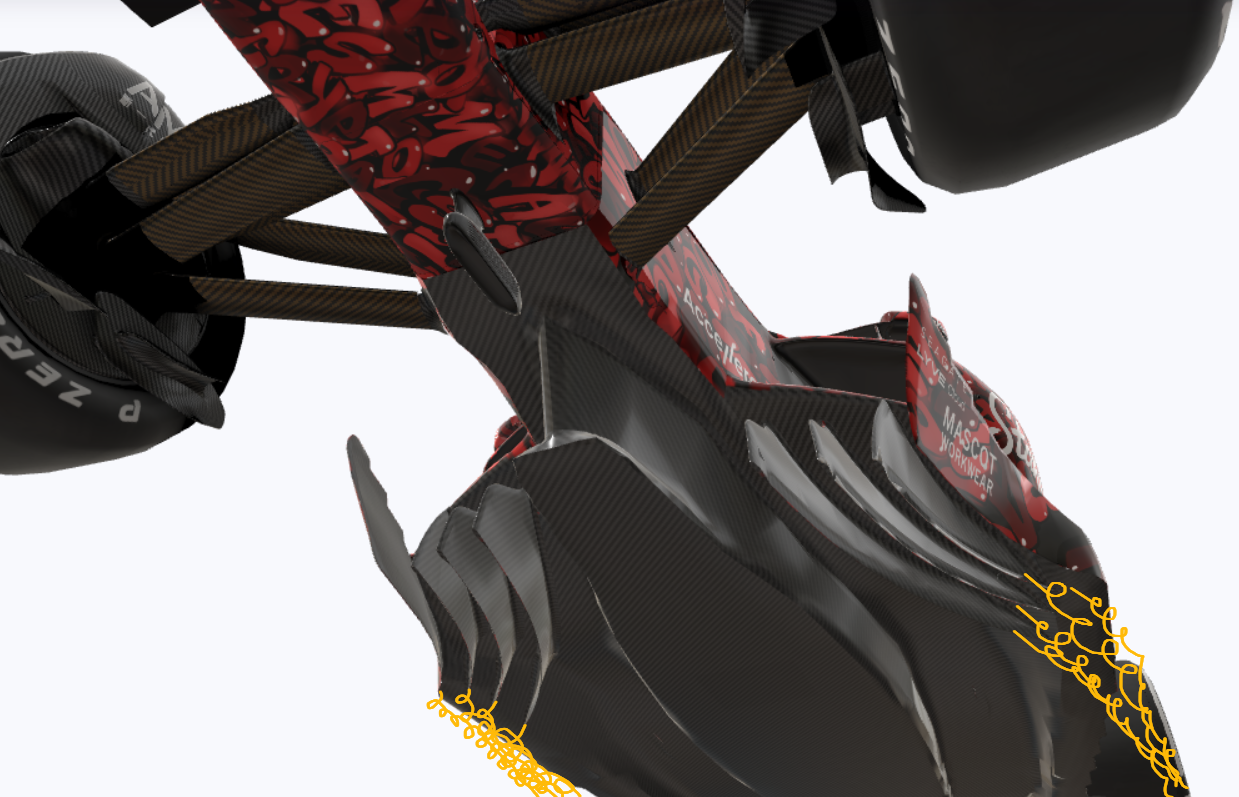
That's all? No way! The aerodynamics of a single-seater is far more complex than we have seen… Secondary phenomena integrate with those seen and determine the aerodynamic layout of cars competing in what, not by chance, we define as the pinnacle of motorsport!
Index
What are the secrets behind the underfloor of a Formula 1 car?